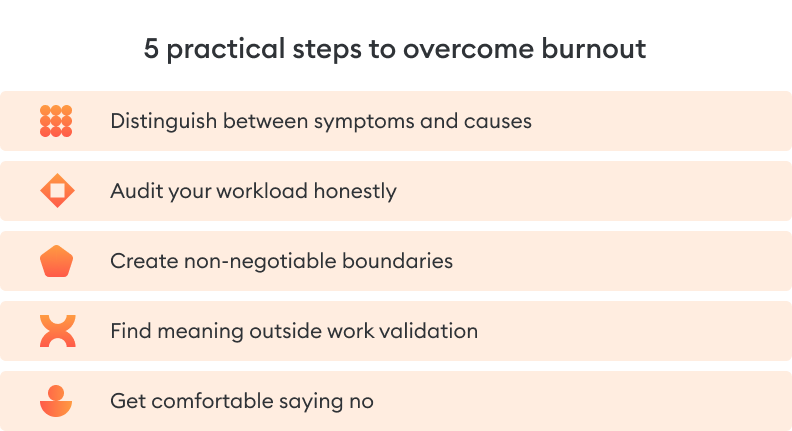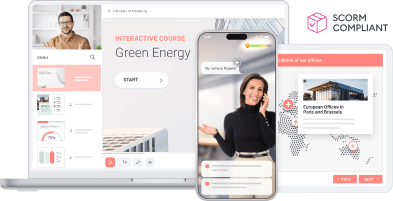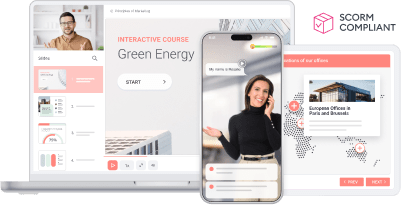Instructional Design Burnout Is Real: How to Spot It and Reignite Your Spark

It’s 9:00 AM, and your inbox is already full: a new compliance update, two SME reviews, and a message that says, “Can we have this ready by Friday?”
You open your authoring tool, stare at the blank slide, and feel… nothing. Not frustration, not excitement, just the quiet weight of another project. You used to love this work. Why does it feel like a race you didn’t sign up for? That quiet fatigue has a name: instructional design burnout.
Burnout is becoming a growing issue across learning teams, from corporate L&D to higher ed, where instructional design work rarely pauses. Let’s examine how to recognize it before it becomes a complete shutdown and the practical steps to take to help you avoid burnout and stay in love with your work.
Why Burnout Hits Instructional Designers Hard
Of course, burnout isn’t exclusive to instructional design careers. It can happen in any field where people care deeply about what they do. However, building learning materials creates a perfect mix of challenges that makes it easier to slip into.
Tom McDowall, Founder of and Chief Learning Geek at Evolve L&D, shared his expertise and some new ideas on the most frequent causes of ID burnout:
The course factory trap
In both universities and corporate learning teams, when content creation is treated as a production line instead of a thoughtful part of the curriculum design process, it’s just a matter of time before instructional designers experience burnout.
“If you’re trapped in a course factory, you’re fighting a business model problem. Many L&D functions treat designers as order takers. Speed becomes the only metric because nobody measures whether courses improve performance.”
Over time, cognitive load and the pressure to be creative on demand dull educator well-being. Learning designers stop asking why and just focus on getting things done. Eventually, the work feels mechanical — and that’s when the spark goes out.
Creative fatigue and unrealistic timelines
Tight deadlines, limited tools, and long work hours create stress in education or instructional design that no productivity routine can fix. Discovery and testing are skipped because there’s “no time.” And with artificial intelligence reshaping how we design learning, there’s growing pressure to keep up with every new tool and technology.
As Tom McDowall says, true efficiency is about doing less better rather than doing more faster. But most IDs aren’t given that choice, and operating in delivery mode too long eventually kills both quality and curiosity for designing courses.
Lack of recognition
Most of the work that makes learning effective isn’t visible: clarifying the brief, fixing gaps, and keeping people aligned. Without organizational support, even experienced IDs start questioning whether their meaningful contributions matter.
Stakeholders start thinking that learning design is just making slides look nice. After a few cycles of that, you stop expecting anyone to understand what you actually do. That’s also how imposter syndrome quietly takes hold.
Professional isolation
Many instructional designers work solo or on small, distributed teams. You might be the only person who actually understands what your job involves. Even in higher education (universities and colleges), IDs often work alone, supporting multiple departments with little connection to peers.
“Remote work made an existing problem visible. Many IDs feel isolated even in offices, surrounded by people who don’t understand their work.”
There’s no one to bounce ideas off, no peer network, no online communities, and no support. Over time, that lack of professional contact, community insights, and continuous learning makes it harder to stay sharp or motivated when you’re always in your head.
Read also:
- The Best Instructional Design and L&D Podcasts to Follow
- The Best Books on Instructional Design
- The Best Instructional Design Certificate Programs and Courses
Unclear stakeholder expectations
Instructional designers often find themselves in the middle of a gap between business strategy and learning goals. Stakeholders want results but rarely define what success looks like, or they expect training to fix problems that aren’t training problems.
IDs end up trying to hit moving targets while defending design choices that no one agreed on in the first place. That constant mismatch between expectations and reality drains energy faster than any deadline.
The Hidden Signs You Might Be Burning Out
Burnout rarely shows up overnight. You might not notice it until you recognize yourself in half of the squares below.
We put together this instructional design burnout bingo not to diagnose anything, but to point out the everyday signs most of us have learned to ignore. Take a look at these hidden signs of burnout, and if too many of these feel familiar, it might be time to pause and rethink your workload or current priorities:

None of these signs mean you’re bad at your job. They just show you’ve been doing it under the wrong conditions and with no support for too long. And it leads to a fair question: how can you design engaging learning when you’re no longer engaged yourself?
How to Reignite Your Spark Without Burning Out Again
Getting out of burnout in education takes more than rest. It takes clear boundaries, honest reflection, and a different way of managing your time and focus.
Tom McDowall shares a few insights that help instructional designers regain clarity, control, and interest in their work, without drastic changes or empty “quick fixes.”

Distinguish between symptoms and causes
Reflect on your experiences: feeling exhausted or unfocused is a symptom, not the root problem. Before trying to “fix” burnout, figure out what’s driving it: excessive workload, lack of control, poor recognition, or a mismatch between your values and the organization’s.
Once you name the cause, you can decide whether to change the system, set firmer boundaries, or move on, but at least you’re solving the right problem.
Audit your workload honestly
Track how you spend your time for a week or two. Then sort your tasks into three groups: work that creates value, work that maintains systems, and work that exists because of dysfunction.
“If more than 30% of your time falls into the dysfunction category, you’ve identified your problem. Now you can either fix it or acknowledge you’re in an environment that doesn’t value your time.”
It’s a simple exercise, but it makes the real issue visible. Once you see where your time goes, you can decide whether to change the process or the context you’re working in.
Get comfortable saying no
At some point, every experienced ID learns that saying yes to everything is a shortcut to burnout. It doesn’t mean being rude or defensive. When a new request lands, ask what you should drop to make room for it. Most of the time, people haven’t thought that far. Treat saying no not as refusing to help, but as protecting the quality of what you’ve already said yes to.
Create non-negotiable boundaries
People take your boundaries as seriously as you do. Pick the ones that matter and actually stick to them, even when it’s inconvenient.
“These boundaries might be: no meetings before 10:00 AM, no work email after 6:00 PM, taking your full lunch break, using your holiday allowance, or refusing to work weekends except for genuine emergencies.”
The hardest part is keeping them when deadlines, managers, or guilt try to push past them. But if everything’s flexible, then nothing really protects your plan.
Find meaning outside of work
When your sense of worth depends on stakeholder feedback or project outcomes, burnout is almost guaranteed. The more you anchor your identity in performance, the harder it gets to say no or let something be “good enough.” Work stops being work and becomes proof of value.
To prevent burnout, it’s super important to have an identity beyond your job role: hobbies, learning, relationships, new opportunities — anything that doesn’t depend on metrics or approval cycles.
In Closing
The most valuable resource in any organization is its people, whether in corporate L&D or faculty development. Instructional design burnout should be a shared responsibility between L&D specialists and the leadership.
That starts with small, actionable routines. Normalize honest conversations about workload and creative exhaustion, support project debriefs that include “what went well” and “what drained us,” and promote professional development for the L&D team members themselves.
When the people who do meaningful work have space to think, reflect, and grow their skills, everyone benefits: the students, the business, and the surrounding culture.







